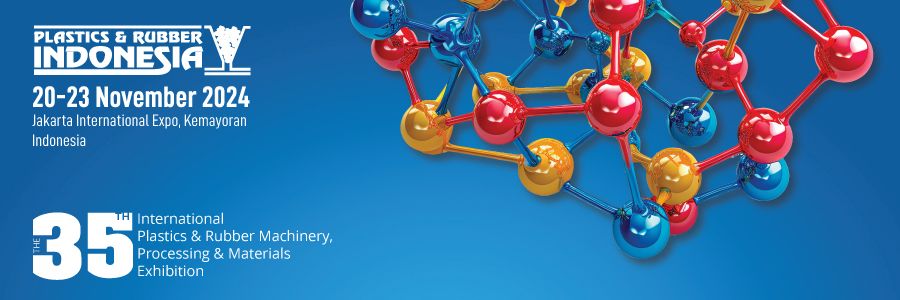The Best Two Shot Injection Mold: Enhancing Design Flexibility for Innovative Manufacturing
Time:
2025-05-19
The Best Two Shot Injection Mold: Enhancing Design Flexibility for Innovative Manufacturing
Table of Contents
- 1. Introduction to Two Shot Injection Molding
- 2. What is Two Shot Injection Molding?
- 3. Advantages of Two Shot Injection Molding
- 4. Applications of Two Shot Injection Molding
- 5. Design Considerations for Two Shot Injection Molding
- 6. Choosing the Right Two Shot Injection Mold
- 7. Maintenance Tips for Two Shot Injection Molds
- 8. The Future of Two Shot Injection Molding
- 9. Conclusion
- 10. FAQs
1. Introduction to Two Shot Injection Molding
In the realm of manufacturing, the quest for efficiency and innovation is ever-present. **Two shot injection molding** stands out as a revolutionary technique that has transformed how products are designed and produced. This advanced process not only enhances the aesthetic appeal but also improves functional attributes by combining multiple materials during a single molding cycle. In this article, we will delve deep into the intricacies of two shot injection molding, exploring its advantages, applications, and future potential.
2. What is Two Shot Injection Molding?
Two shot injection molding is a manufacturing process that allows the production of complex parts using two different materials or colors simultaneously. The process involves two injection cycles:
1. **First Shot**: The first material is injected into the mold, forming the base structure.
2. **Second Shot**: After the first material has cooled slightly, a second injection introduces an additional material or color, which bonds to the first shot.
This method enables manufacturers to create parts with multi-material functionalities or visual effects that are impossible to achieve with traditional single-material molding processes.
3. Advantages of Two Shot Injection Molding
Two shot injection molding offers several significant advantages that make it an appealing choice for manufacturers looking to innovate.
3.1 Design Flexibility
One of the most compelling benefits of two shot injection molding is **design flexibility**. This process allows designers to combine materials with different properties, such as soft-touch surfaces with rigid structural components. As a result, products can be designed with integrated features that enhance user experience, such as ergonomic grips or multi-color designs that attract consumers' attention.
The versatility of this molding technique means that designers can explore a wider range of creative possibilities, helping brands stand out in competitive markets.
3.2 Cost Efficiency
While the initial setup cost for two shot injection molds can be higher than single-shot molds, the overall cost efficiency in production often justifies the investment. This is due to:
- **Reduced assembly costs**: Since multiple components can be produced in a single shot, the need for additional assembly processes is minimized, substantially lowering labor and handling costs.
- **Material savings**: Two shot molding minimizes waste by optimizing material usage, as molds can be designed to use only the necessary amount of each component.
- **Faster production times**: The ability to create complex parts in one cycle reduces cycle times, thereby increasing throughput without sacrificing quality.
3.3 Improved Product Quality
The advanced bonding techniques used in two shot injection molding result in parts that exhibit superior quality. Key quality improvements include:
- **Enhanced durability**: The materials used in two shot molds can be selected to enhance the strength and durability of the final product.
- **Better aesthetics**: The seamless integration of colors and materials leads to more visually appealing products that meet consumer expectations.
- **Consistent results**: Since the process is automated, manufacturers benefit from consistent quality across production runs, reducing the likelihood of defects and improving overall production reliability.
4. Applications of Two Shot Injection Molding
The applications of two shot injection molding are vast and varied, spanning multiple industries. Notable applications include:
- **Consumer Electronics**: Many gadgets and devices utilize two shot molding for creating sleek, multi-material cases that offer both protection and aesthetics.
- **Automotive Parts**: The automotive industry leverages this technique to produce interior components with enhanced ergonomics, such as soft-touch surfaces combined with structural elements.
- **Medical Devices**: Two shot molding is ideal for medical applications where sterilization and multi-functionality are critical, allowing for the creation of complex parts that meet stringent regulatory standards.
- **Household Products**: From kitchen tools to cleaning supplies, the ability to combine textures and colors has revolutionized product design in consumer goods.
5. Design Considerations for Two Shot Injection Molding
Designing for two shot injection molding requires careful consideration of various factors to ensure optimal results. Key considerations include:
- **Material Compatibility**: Selecting materials that bond well is crucial for achieving desired performance characteristics. Understanding the properties of each material, such as thermal expansion and adhesion, can prevent future issues.
- **Mold Design**: The design of the mold must accommodate two separate injection systems, which can complicate mold design. Engineers should work closely with mold makers to ensure that the design is feasible and efficient.
- **Cycle Time Optimization**: Balancing the cooling times for both materials is essential to reduce cycle times. Proper analysis and simulations during the design phase can lead to improved efficiency.
6. Choosing the Right Two Shot Injection Mold
Selecting the right two shot injection mold involves careful consideration of several factors:
- **Purpose and Functionality**: Understand the specific application of the product to choose suitable materials and designs that meet functional requirements.
- **Manufacturer Expertise**: Collaborating with experienced mold makers who specialize in two shot molding is essential for achieving high-quality results. Their insights can help optimize the design and manufacturing process.
- **Budget**: Consider the cost implications of various mold designs and materials. The right balance between cost and quality will determine the success of the project.
7. Maintenance Tips for Two Shot Injection Molds
To ensure the longevity and performance of two shot injection molds, regular maintenance is vital. Here are some tips for keeping molds in optimal condition:
- **Regular Cleaning**: Routine cleaning helps prevent resin buildup and contamination, which can affect product quality. Implement a cleaning schedule based on usage frequency.
- **Inspection**: Regularly inspect molds for wear and tear. Catching issues early can prevent costly repair or replacement later on.
- **Lubrication**: Proper lubrication of moving parts ensures smooth operation and reduces friction, which can lead to premature wear.
- **Storage**: When not in use, store molds in a controlled environment to prevent rust and damage.
8. The Future of Two Shot Injection Molding
As technology evolves, the future of two shot injection molding looks promising. Innovations in materials, such as bio-based plastics and advanced composites, will open new avenues for design and functionality.
Moreover, incorporating automation and robotics into the manufacturing process can enhance efficiency and accuracy, making it possible to produce increasingly complex designs. The integration of smart technologies will also enable real-time monitoring and adjustments during the molding process, ensuring optimal performance.
9. Conclusion
Two shot injection molding stands at the forefront of modern manufacturing, offering unparalleled design flexibility, efficiency, and product quality. As industries continue to seek innovative solutions for their manufacturing needs, this technique promises to play a pivotal role in shaping the future of product design and production. By understanding its advantages and applications, manufacturers can leverage two shot injection molding to create outstanding products that meet the ever-evolving demands of consumers.
10. FAQs
1. What materials can be used in two shot injection molding?
Two shot injection molding can utilize a variety of materials including thermoplastics, elastomers, and even some composites. The choice of materials depends on the desired product characteristics.
2. How does two shot injection molding reduce production costs?
By combining multiple functionalities into a single part, two shot molding reduces the need for assembly, minimizes waste, and shortens cycle times, all contributing to lower production costs.
3. Is two shot injection molding suitable for small batch production?
While primarily used for large-scale production, two shot injection molding can also be effective for small batches, especially when complex components with multi-material requirements are needed.
4. How does the cooling time affect the two shot molding process?
Cooling time is critical in two shot molding, as it impacts the cycle time and the quality of the final product. Balancing the cooling times of both materials is essential for efficient production.
5. Can two shot injection molding be used for medical applications?
Yes, two shot injection molding is widely used in the medical industry due to its ability to create precise, multi-functional components that comply with stringent health regulations.
By understanding the principles and advantages of two shot injection molding, manufacturers can unlock a wealth of opportunities for innovative product development.
RELATED NEWS












